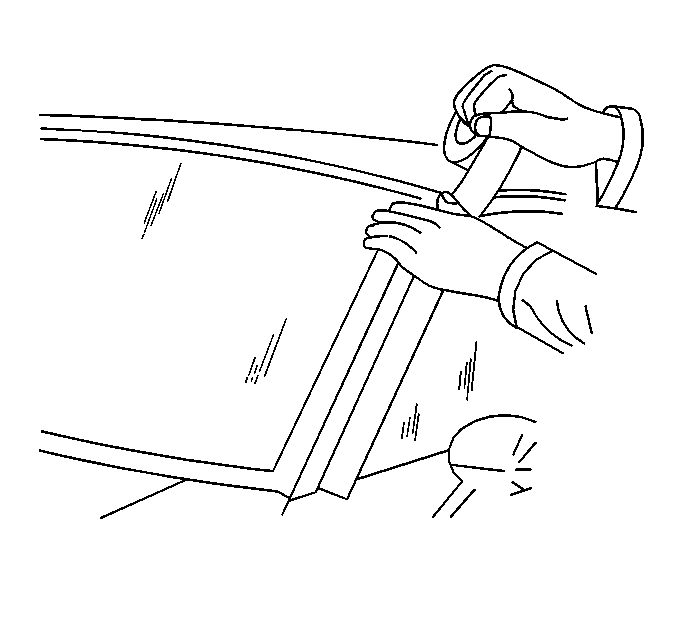
In order to analyze a
reported wind noise condition, test drive the vehicle. Many variables exist
that may singularly or collectively create the objectionable noise.
Caution: An assistant should drive the vehicle while the technician checks for
the location of the reported condition. Otherwise, personal injury could result.
Choose a regular route in order to road test the vehicle:
| • | Perform the road test in an area that includes smooth and straight
streets that run in the following directions: |
| • | Perform the road test in an area where there is little traffic
that may interfere with the test. |
| • | Perform the road test in an area where there is little noise that
may interfere with the test. |
Important: Do not exceed safe, legal speeds.
Drive the vehicle at the speed at which the noise was first noticed
by the owner, or until the noise is heard.
Important: Often there is one primary leak and one or more secondary leaks that
contribute to the noise condition. Repairing only one of the contributing
leak sources may only reduce the condition.
The wind noise diagnosis also uses many of the water leak diagnosis
tests.
One of the following conditions may often cause wind noise:
| • | Misaligned body surfaces |
The following are the basic types of wind noise:
When moving at highway speeds, air pressure inside the vehicle becomes
significantly greater than the air pressure outside. If there is a leak, escaping
air causes a hiss or a whistle.
Wind roar is caused by air passing over or through an opening between
body surfaces. Adjustments to the body surfaces may correct wind roar.
Air pressing over the vehicle's body causes wind rush. Wind rush is
related to the aerodynamics of the vehicle. Both wind whistle and wind roar
are serviceable. Rule out wind whistle and wind roar before you determine
that a wind noise is due to wind rush.
Diagnose wind whistle or wind roar as follows:
- Make note of the following details of the wind noise:
| • | The perceived location of the wind noise |
| • | The location where the wind noise is loudest |
| • | When the wind noise occurs |
| • | The vehicle speed at which the wind noise occurs |
| • | The position of the windows |
| • | What the windnoise sounds like |
- Inspect the vehicle for the possible cause(s) of the windnoise.
- Test drive the vehicle in order to determine if the windnoise
is external or internal.
- Perform a visual inspection for the following concerns:
| • | Sealer and/or adhesive skips |

